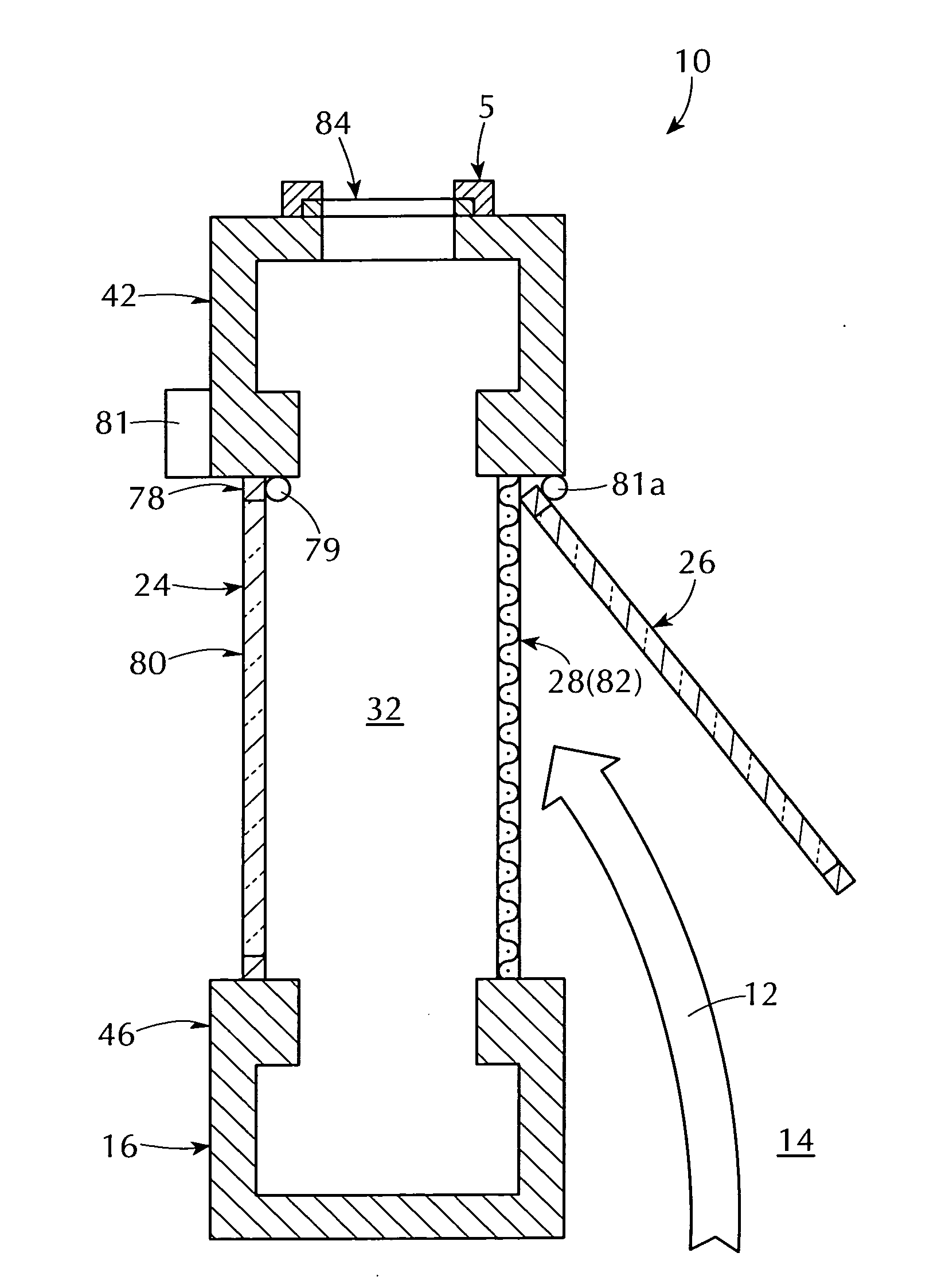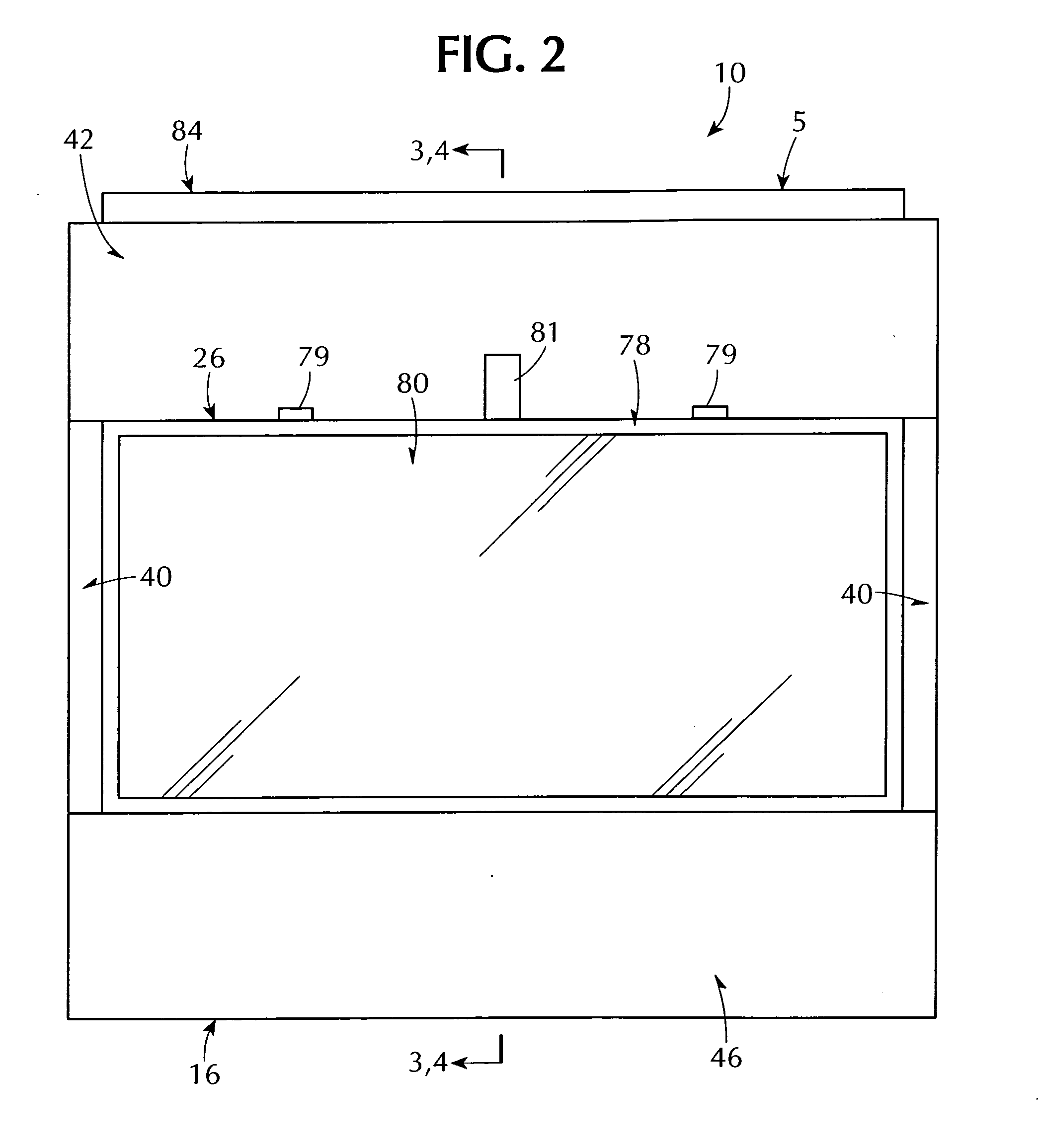Tri-vent awning window
a technology of awning window and awning frame, which is applied in the field of awning window, can solve the problems of inability to achieve truly optimal performance, inability to provide some way to utilize or take full advantage of structures, and unquestionable need to improve conservation and heat utilization technology
- Summary
- Abstract
- Description
- Claims
- Application Information
AI Technical Summary
Benefits of technology
Problems solved by technology
Method used
Image
Examples
Embodiment Construction
A. General.
[0050]Referring now to the figures, in which like numerals indicate like parts, and particularly to FIGS. 1-4, which are, respectively, a diagrammatic exterior elevational view of the tri-vent awning window of the embodiments of the present invention absorbing sunlight heat in warm weather that otherwise would flow uncontrolled therethrough and discharging the sunlight heat to the atmosphere while permitting relatively unobstructed vision therethrough and passing the sunlight heat in cold weather therethrough for thermal warming, a diagrammatic interior elevational view of the tri-vent awning window of the embodiments of the present invention absorbing sunlight heat in warm weather that otherwise would flow uncontrolled therethrough and discharging the sunlight heat to the atmosphere while permitting relatively unobstructed vision therethrough and passing the sunlight heat in cold weather therethrough for thermal warming, a diagrammatic cross sectional view taken along LI...
PUM
 Login to View More
Login to View More Abstract
Description
Claims
Application Information
 Login to View More
Login to View More - R&D
- Intellectual Property
- Life Sciences
- Materials
- Tech Scout
- Unparalleled Data Quality
- Higher Quality Content
- 60% Fewer Hallucinations
Browse by: Latest US Patents, China's latest patents, Technical Efficacy Thesaurus, Application Domain, Technology Topic, Popular Technical Reports.
© 2025 PatSnap. All rights reserved.Legal|Privacy policy|Modern Slavery Act Transparency Statement|Sitemap|About US| Contact US: help@patsnap.com



